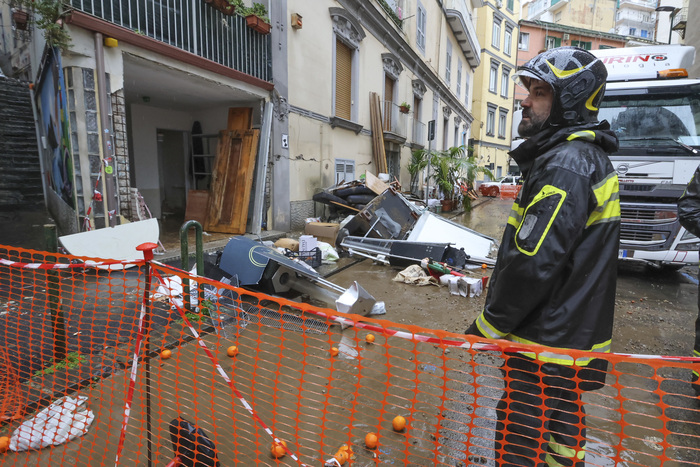No admirer of the sculptural work of Jaume Plensa will be able to overcome the spellbound speech that the artist made about his latest project in Barcelona: the three doors that will close the porches of the Gran Teatro del Liceu, which he will reveal at the same time as the design of the set and
Verdi 's
Macbeth
costume .
“My work will be the new face of the Liceu and it will have the color of the moon.
I hate the word
door
, everything that closes makes me nervous.
But these will be more a tribute to the diversity of Barcelona, to an architect like Gaudí and his bars, and to the work of Miró, who has marked the influence of the Ramblas even in tragic moments such as the attack [in August 2017]. ”.
About his aesthetic bet for
Macbeth
, excitedly revealed that he will parade his classic mesh heads and characters made of alphabets.
"I have made an extraordinary mental opera, unforgettable, incredible," he assured.
It's hard to find an artist who feels so much adoration for himself.
With his humble appearance and discreet, almost monastic tone of voice, his constant allusions to poetry and philosophy, and an almost fundamentalist spiritualism, he is the kind of artist who does not need a dealer or an advertising agency.
Even the overwhelming killing machine that is Macbeth and his Lady, excess of blood and energy, erotically fierce, is something else for Plensa, more hygienic and candid.
“There has been an error in approaching the text”, says Plensa.
“I have not wanted to see any
Macbeth
because I have never liked him.
There is too much blood, sweat and dirt.
My
Macbeth
is more aesthetic.
It is a work about the duality of body and soul, the visible and the invisible, body and matter”.
But the rude magic of Shakespeare's
Macbeth
, its power of fantasy and something of those characters who delight in apocalyptic evil —murderers, thieves, usurpers, rapists, drunken doormen, beggars— did infected the artistic director of the Liceu, Víctor García de Gomar, when he wanted to argue the need to protect the access spaces to the opera with the Plensa doors, which will close the historic hall to those
people of bad living
that until now filled us with both fear and pity.
De Gomar offers us a catharsis for the horrors that existed under the entrance, with situations such as, he said, "prostitution, people shooting heroin or making love, rapes and people sleeping because they have nowhere else and they don't want to leave."
“We needed to protect a space that had become difficult with violence and unsafe.
At the gates of Paradise we have found hell”, he stated with gnostic horror.
And they looked for an artistic proposal to solve it: Plensa and his new religion of patience and asceticism that exorcises the citizen's indignation at dirt and theft, of politicians and administrators (the Millet and Montull case), of pickpockets and hustlers.
Carmela
.
And it is curious that the acupuncture for the sick city offered by the Barcelona sculptor, winner of the 2012 National Prize for Plastic Arts, the 2013 Velázquez Prize and the 2015 Ciutat de Barcelona, is that slightly disturbing expression of acceptance and serenity that so much appeals to popular taste.
The Plensa fences are designed, according to Víctor García de Gomar, to avoid situations of "prostitution, people shooting heroin or making love, rape and people sleeping because they have no other place"
Now the same thing happens again.
So why call them gates when they mean fences?
They are “doors that don't look like doors”, acknowledges Plensa.
The works have had the approval of the Department of Heritage of the Barcelona City Council without going through public competition.
They will be installed in September, when the season begins, and it consists of three pieces of four meters by another four, concave, just one centimeter wide.
They weigh 550 kilos each and are decorated with their familiar — boring — letters from different alphabets.
His message flees from the blood, sweat and dirt left there by those who, they say, will end up when night falls.
The answer to filth is those cold metallic letters that cast just enough of a shadow to scare off criminals.
Is this really the reality of the streets of Barcelona, those expressionist Macbethian phantasmagorias that sniff around doorways and arcades and that have ended up spurring the ecstatic artist to his sublime project in the city?
The sanitizing power of the work of some artists can manage to affirm a reality that is not such (and if it were so, it would be necessary to put "doors" on practically all the emblematic buildings of the city, not to mention the peripheral neighborhoods) and undoubtedly they influence the submission of citizens to their ambitious imagination, conduit of transcendent energies.
Plensa seeks to complete his metaphors of Gaudí and Miró;
the bars of the first, the constellations of the second.
That audacity is the signature of the artist, the one that provides a clean, neutral space, far from the bad streets, to which we,
as an audience, we are thrown.
They deceptively show us that crimes are repaired when the pacifying social order of art is restored.
You can follow BABELIA on
and
, or sign up here to receive
our weekly newsletter
.
Exclusive content for subscribers
read without limits
subscribe
I'm already a subscriber


/cloudfront-eu-central-1.images.arcpublishing.com/prisa/OMA4UFCHWBCAJBF6ZSPZWE4ARQ.jpg)




/cloudfront-eu-central-1.images.arcpublishing.com/prisa/JBFQB3EZWBA5INT53E6KLGEJ2Q.jpg)

/cloudfront-eu-central-1.images.arcpublishing.com/prisa/LYB64TRA5WD62EN4HZ2RW2LLCQ.jpg)